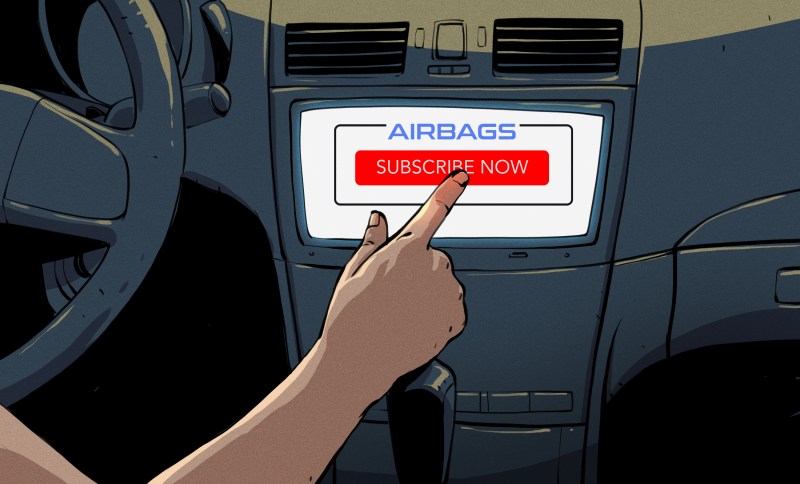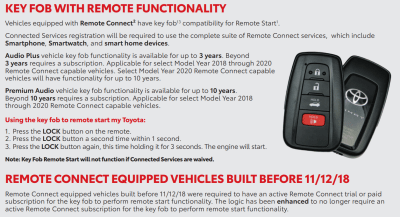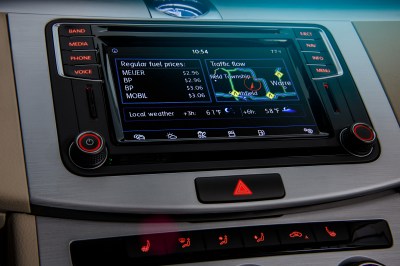
Every few years, someone pushing a startup to investors comes up with an acronym or buzzword which rapidly becomes the new hotness in those circles. One of the most pernicious is “as a Service,” which takes regular things and finds a way to charge you a regular fee to use them.
Automotive companies just absolutely loved the sound of this, and the industry is rapidly moving to implement subscription services across the board. Even if there’s hardware in your car for a given feature, you might find you now need to pay a monthly fee to use it. Let’s explore how this came about, and talk about which cars are affected. You might be surprised to find yours already on the list.
Subscription Required

A long time ago, before the world went mad, you could option out your car with all kinds of nice equipment when you ordered it from the dealership. You’d pay a bit extra, of course, but some nice people at the factory would bolt in the extra gear, and you’d enjoy the extra nice little touches that you’d paid for.
It was a simple system, and it made sense. Things like heated seats or stereo upgrades really needed to be installed at the factory; going back to the dealer later for more upgrades would be complicated and a relatively unattractive option.
These days, many cars are connected to the Internet around the clock via their own built-in cellular modules. These serve all kinds of purposes, from safety monitoring to allowing the automaker to roll out software updates as needed over the air.
However, this connectivity also created a new opportunity. Automakers could now remotely turn features in the car on and off from the comfort of their ivory towers. Thus was born a new opportunity for monetization. Pay the car company a toll, else you can’t have nice things.
It’s Already Happening

This may sound like a problem brewing for the future, but sadly it is already very much our present reality. The big breakout story this year has been that many customers have not realized that they’re already driving cars subject to subscription-only features.
As reported by The Drive, many Toyota customers have only just realised that the key fob remote start feature in their vehicles is only enabled if they maintain a subscription to Toyota’s Connected Services. The issue has been masked thus far, as it only effects cars built from 2018 onwards, and Toyota provides most drivers with a free 3-year subscription, extended to 10 years for those that spring for the Premium Audio package.
However, after that period is over, if no ongoing subscription is paid for, the car’s remote start feature will cease to work. It matters not that the key fob and the vehicle can still communicate fine, nor that all the hardware is still in place. The feature will cease to work unless the fees are paid.
Obviously, there’s an argument to be made that automakers should be able to cover ongoing costs of maintaining cellular connections to vehicles. For things like remote start apps using the Internet, and other cellular-enabled features, it’s understandable why fees would be required. However, in this case, key fob remote start requires no cellular connection at all. Thus, charging a fee for this feature is solely a revenue-generating measure. Amazingly, Toyota have begun “reviewing” the situation after blowback received when the story broke.
Interestingly, some Toyota models built prior to November 12, 2018, can no longer maintain a cellular connection in the United States due to pending 3G network shutdowns. In these cases, Toyota has “enhanced” the vehicles to no longer require a cellular subscription for the remote keyfob start feature. It’s unsurprising, as Toyota no longer has a way to communicate subscription status with these cars now offline. It’s a goodwill move; Toyota could have just as easily done nothing as the cars fell off the network, and let the feature die forever.
A Widespread Problem

The problem isn’t unique to Toyota, though. Tesla have been particularly keen on similar antics, famously disabling features on a used car that the previous owner already paid for. In this case, the features weren’t even subscription based, but subject to a one-time payment. Tesla cared not, and disabled the features anyway. This left the new owner of the used car significantly out of pocket, as they had paid for a car advertised as having certain features that evaporated once they took ownership.
Luxury brands have jumped on the bandwagon, too. The new EQS luxury electric sedan from Mercedes-Benz comes with rear-wheel steering. However, it’ll only steer up to 4.5 degrees unless you pony up some extra cash. As reported by Autoblog, if you want the full ten degrees of operation from the system, you’ll have to pay an annual fee of €489 euros. The hardware to do the full level of steering is in every car; Mercedes has just decided that for the German market at least, you’ll have to pay extra to get the most out of it.
BMW and Audi are getting involved too with their own takes on functions-on-demand. BMW are trialling an annual fee system for remote start and a integrated dash camera, while also contemplating asking drivers to regularly fork out for simple things like heated seats and steering wheels that are already built into the car. Audi, meanwhile, will offer higher-speed data connections as well as improved vehicle lighting operation for those who sign up for a regular payment.
Many other automakers are already running subscription services, too. Whether its for navigation system updates and traffic information, or for driver assist systems like GM’s Super Cruise, they’re all out there tying vehicle functionality to a regular monthly fee.
Outside of automakers, even accessory companies are keen to get a regular dollars flowing in. In perhaps the most horrifying example, the Klim motorcycle safety airbag system will not inflate in a crash unless owners are paid up on their subscription. Gut-wrenching stuff.
The Why

It’s not difficult to understand why this came about. From a business perspective, finding a way to get regular money flowing out of existing customers is a hugely-attractive proposition. Rather than seeing a customer once every few years when they buy a new car, and hoping they stay faithful, instead, that person can contribute each month to the company’s bottom line. If a car is owned long enough, too, the sum of the subscription fees could far exceed what the company would have originally charged for the option to be installed in the first place.
Automakers will argue that what they’re offering is flexibility. Customers will only have to pay for what they want and need, and they can purchase extra features as and when they want to use them.
However, what they’re also introducing is annoyance. The late Internet era has already weighed down the average person with a huge number of recurring credit card payments, for everything from phone plans to streaming services. Adding on yet another isn’t helping anyone, and is costing consumers more money.
Even worse, it complicates things for used buyers. Test drive a car, and it might have all the bells and whistles -until you sign it into your name and log in to the infotainment system. Then suddenly you’re getting slugged each month with an additional cost on top of the loan repayments just to keep the seats warm. It’s enough to give anyone a headache.
There’s also the spectre of a car losing its features for good once connected services are turned off. Whether it’s older cellular networks being shut down or a company going out of business in a given country, it matters not. Without a regular signal from the mothership, the features disappear. Some, like Toyota, may elect to unlock features in cars in these situations, but there are absolutely no guarantees.
The idea of features-on-demand seems to be very much slanted in favor of the automakers. The industry seeks to gain a whole new income stream at the cost of much consumer frustration. On the other hand, if people can force Toyota to stand down on the keyfobs, maybe we can do it with the other automakers as well.
Whether a consumer movement is successful or not, one suspects that a cottage industry of crackers may spring up to unlock features without paying onerous ongoing fees. We can all look forward to grooving to the cracktros while we unlock the Advanced Windscreen Wiper package for winter, at the cost of occasionally bricking the car with a bad patch. Come what may.
0 Commentaires